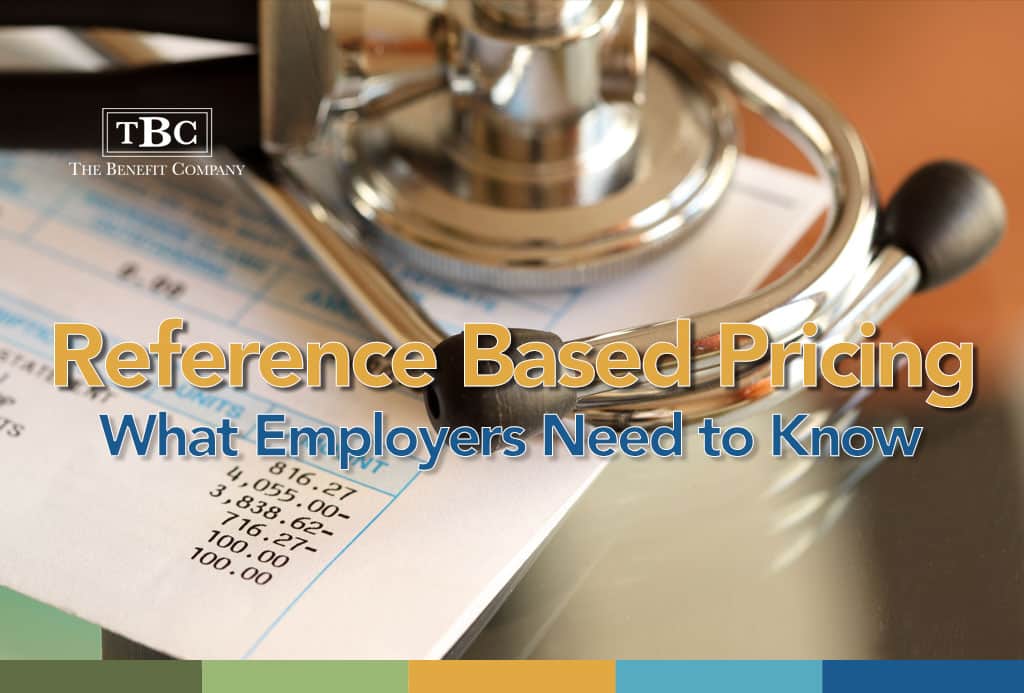One innovative concept for self-funded employers that is rapidly growing in popularity is Reference Based Pricing, or “RBP”. RBP strategies have the potential to save significant amounts of money for both employers and employees. However, they also require special care to ensure success for both parties.
Let’s take a look at how these plans work, as well as some of the pros and cons for employers considering this strategy.
Background
In a typical PPO network model, the insurance carrier provides a “discount” to the employer for accessing their network of physicians. Unfortunately, the dirty little secret is that even after these “discounts”, the carrier-negotiated rates can be substantially higher than what health systems and other providers charge other patients. In Georgia, for instance, it has been reported that the average for-profit hospital charges more than 700 percent of what Medicare charges for the exact same services.
What is Referenced Based Pricing?
Rather than reimbursing off of an arbitrarily set billing charge, RBP sets provider pricing based on a benchmark, typically the Medicare Fee Schedule. RBP plans then add a margin on top of the Medicare Fee Schedule ( typically 125% to 200%) to ensure a more fair and reasonable payment to provider(s). Keep in mind that even at 200% of Medicare, this still represents a significant savings versus typical PPO “discounted” pricing with rates that can be upwards of 700% of Medicare.
Further, RBP plans are normally focused on select non-emergency services where you would typically see wide variance in pricing. This includes services such as lab tests, joint replacements, MRIs, colonoscopies, and so forth.
With these pricing limits for certain procedures in place, employees would only be covered up to the set amount for that service. Thus, any cost difference between what the employer/plan is willing to pay versus what the provider is willing to accept could potentially be the employee’s responsibility (i.e. “balance billing”). In these situations, the Third Party Administrator would assist the employee in negotiating down the amount of the balance billing.
Strategic Considerations
Pros
- Potentially significant cost savings
- Pricing transparency and accountability
- Supports and encourages healthcare consumerism
- Removes network barriers (i.e. more flexibility to partner with best in class vendors for pharmacy, cost containment, disease management, etc.)
Cons
- Exposure to balance billing for employees
- High degree of employee education, communication, and personalized support
- Additional administrative partners to manage
Bottom Line
For employers looking for the most aggressive opportunity to save money within their health plan and challenge the status quo, RBP is certainly worth exploring. However, we recommend that employers proceed with caution. Pay particular attention to the increased employee education and support that is needed to make RBP a “win-win” for both employers and employees. Lastly, vendor/partner selection is critically important with these plans as fees, fee structure, and deliverables vary widely.
Should you have any questions about the merits of a Reference Based Pricing strategy for you organization, please contact The Benefit Company for more information.
- Self-Funding
- Data Analytics
- Ancillary Benefits & Absence Management
- Estate & Business Planning
- Executive Benefits
Phone: 678.904.9342
Toll Free: 800.837.0650
E-Mail: [email protected]
 The Benefit Company
The Benefit Company
